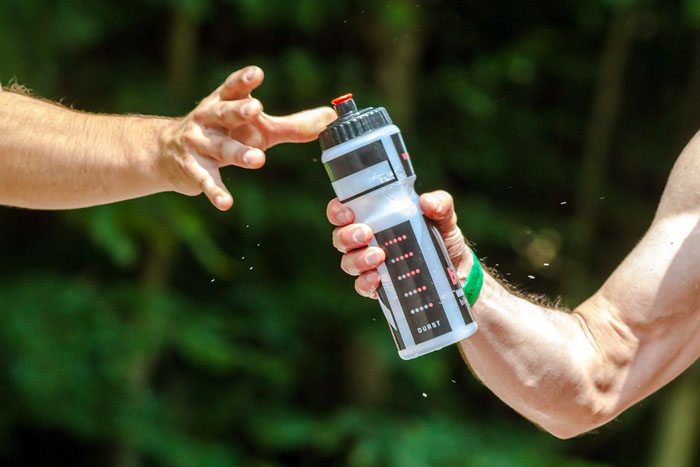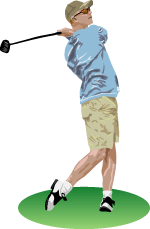Keeping hockey players well-hydrated is important for maximizing performance, particularly when the sport is played in hot and humid conditions. Although the regular hockey season occurs during the winter months (except if near the equator), international events can be held in hot and humid environmental conditions. Also, elite field hockey matches are played on an artificial playing surface, a surface prone to re-radiating thermal energy to the player on the pitch, further increasing the risk of dehydration.
Skill, decision making and aerobic capacity are vital for competitive hockey. Studies have shown that skill performance in hockey can be decreased following intermittent high intensity exercise, intensified with hot environmental conditions (30±0.58oC) (Sunderland and Nevill, 2005), and also impaired when players are 2% hypohydrated (MacLeod, 2012). Sunderland and Nevill, (2005) found that 'decision-making' times were not different following prolonged intermittent high-intensity running. However in 2012, MacLeod found that when hockey players were intentionally hypohydrated to 2% BM, decision making times were slower, however ad libitum fluid intake during subsequent running offset any further decrements in decision making time (MacLeod, 2012).
These data show the importance of players starting training and games in a euhydrated state, as well as consuming adequate fluids during match-play (MacLeod 2012). Special consideration should be taken for goalkeepers, as heat dissipation is restricted by their cumbersome equipment and limited opportunities to consume fluids during play (Malan 2010). Malan found mean net fluid losses of goalkeepers, in cool (20oC) and hot (35oC) environments, were 1.70% and 1.73% of body mass, respectively. To prevent cognitive and skilled performance decrements in hot conditions, goalkeepers should have provision to consume fluid ad libitum during competition (Malan 2010).
 Keeping hockey players well hydrated is important for maximizing performance
Keeping hockey players well hydrated is important for maximizing performanceAs seen in other sports (Burke & Hawley, 1997), hockey players have a tendency to start training hypohydrated, with 63% of athletes severely hypohydrated before starting training prior to the Youth Olympic Games (Devreker et al., 2012). This may not be easily extrapolated to more experienced or nutritionally educated players, as MacLeod (2009) showed that with good knowledge of hydration, the majority of players in an U21 International side were able to maintain hydration status over two consecutive games during moderate environmental conditions (21-23oC, 54% humidity). Average sweat rates were 575 mL/hr, with large inter-individual differences, and no correlation between sweat losses and drinking habits (MacLeod 2009).
A successful hydration strategy developed by Dabinett et al. (2001) for the female English players at the 1998 Commonwealth Games held in Malaysia in extreme environmental conditions showed that players learned to use appropriate strategies to increase their fluid intake and consume appropriate snacks in order to maintain adequate hydration. With challenging environmental conditions seen in many hockey games and tournaments, and the incidence of inadequate hydration, monitoring individual differences in fluid requirements of players would support avoidance of hypohydration, or excessive hyperhydration before training and games.
Practical Guidelines
Avoid hypohydration greater than 2% of body mass, by ...
- Observing body mass changes, daily, and pre- and post-training
- Team education and creating awareness around environmental conditions for training and games.
- Consume a variety of fluids regularly throughout the day.
- Test urine specific gravity pre-games to determine euhydration.
- Make fluids readily available at trainings and games for ad libitum consumption, including goalkeepers.
- Replace 150% of sweat losses with fluid in the 2 – 4 hr following training and games.
References
- Burke, L. M., and Hawley, J. A. (1997). Fluid balance in team sports: Guidelines for optimal practices. Sports Medicine, 24, 38–54.
- Dabinett, J.A., Reid, K., and James, N. (2001). Educational strategies used in increasing fluid intake and enhancing hydration status in field hockey players preparing for competition in a hot and humid environment: a case study. International Journal of Sport Nutrition and Exercise Metabolism, 11, 334-348.
- Devreker, T., Decraene, T., Mertens, T., Vercammen, M., and Vandenplas, Y. (2012) Young elite male field hockey players start exercise hypohydrated. XXXII World Congress of Sports Medicine, Rome, 27 - 30 September
- Macleod & Sunderland (2009). Fluid balance and hydration habits of elite female field hockey players during consecutive international matches. The Journal of Strength and Conditioning, Jul, 23(4), 1245-51.
- MacLeod (2012). Previous-day hypohydration impairs skill performance in elite female field hockey players. Scandinavian Journal of Medicine in Science and Sports, Jun, 22(3), 430-8.
- Malan, M., Dawson, B., Goodman, C., and Peeling, P. (2010). Effect of heat exposure on thermoregulation and hockey-specific response time in field hockey goalkeepers. Journal of Science and Medicine in Sport, 13, 371-375.
- Sunderland C., Nevill M.E. (2005). High-intensity intermittent running and field hockey skill performance in the heat. Journal of Sports Science, 23 (5), 531–540.



